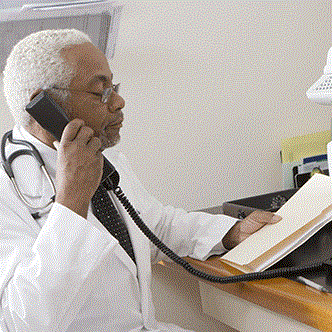
When it comes to treating stroke, time is of the essence. Most strokes occur when a blood clot blocks the flow of blood to the brain. For such strokes, prompt use of a blood clot-busting therapy called thrombolytics is lifesaving. Thrombolytics help dissolve blood clots quickly. When administered in the first three hours of a stroke, they can limit permanent damage to the brain.
In recent years, phone and video teleconferencing, referred to as telemedicine, has become widespread to improve stroke diagnosis and treatment. When stroke specialists are not on site at a hospital, telemedicine allows hospital staff to instantly connect with a specialist, providing a timely neurological evaluation. Such support is especially vital in remote areas that may not have a comprehensive stroke center.
To evaluate the impact telemedicine has had on stroke outcomes, researchers analyzed stroke data from five hospitals in the United Kingdom between 2012 and 2013. During this time, a total of 586 patients were treated for stroke and received thrombolytic treatment—one-third of whom received such treatment as a result of telemedicine. According to a study recently published in the medical journal Stroke, investigators found that telemedicine helped increase treatment time by 22 minutes and that outcomes were similar between both treatment groups.
Based on findings, authors believe that phone and video support helps improve the delivery of stroke treatment. Thrombolytic therapy is most effective when administered a few hours after the onset of stroke symptoms. Providing prompt treatment for stroke can mean the difference between life and death.
However, it’s important to note that in order to utilize telemedicine, hospitals must have an established protocol for such situations. Typically, large stroke centers serve as a resource to remote centers that don’t have neurologists on call to recommend treatment. Based on study findings, it’s important that centers without on-site resources utilize telemedicine to provide the best treatment for stroke.